The metal work from the hoard have begun to be assessed in the lab at the Colchester & Ipswich Museum Resource Centre. Each individual piece has been weighed and measured, and given a unique catalogue number.
The cataloguing of the hoard material is an ongoing process, with each piece of metal work assessed and identified, for example using the decoration on the axes to attribute it to a particular type.
Several of the complete axes contained soil in their sockets, and the contents had to be carefully removed looking for any metal work or organic matter that may have been deliberately stuffed into the socket opening. The position and selection of broken pieces of metalwork contained within the sockets may give us an insight into the selection process of somebody in the Bronze Age.
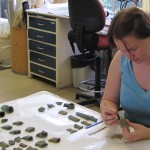
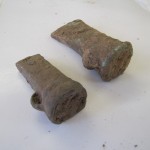
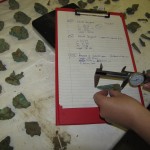
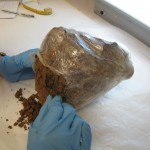
As well as working on the metal work, the block lifted vessel needed some attention. The pot was x-rayed in its block-lifted condition, and from this you can clearly see the outline of two socketed axes – one appeared to be complete, and the other showed the blade end only. The lower areas of the pot show up as bright white areas, which is due to the high density of metalwork contained in the lower part of the pot. The x-ray was also important to see the extent of damage to the pottery; you can clearly see there is no ceramic material present on one side and that a piece of metal work has been pushed outside the pot.
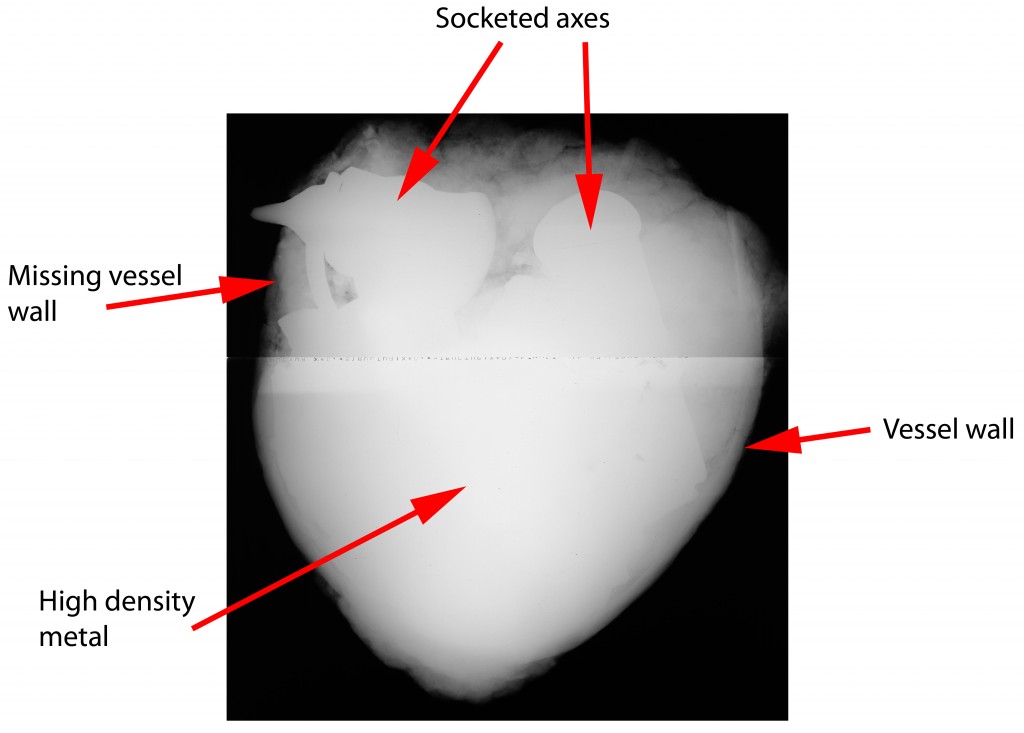
The pot was then unwrapped and examined by Stefanie White (Conservator, Colchester and Ipswich Museums) to assess the condition of the pottery vessel, particularly in the areas where we knew damage had already occurred. Looking at the base and walls of the vessel, there were some clear fractures that needed to be addressed before we could even consider excavating the contents.
Stefanie surface cleaned the outside of the pot, and consolidated the areas around the fractures with some reversible conservation adhesive. A support of bandages, calico and a polymer was then made and wrapped around the base and sides of the vessel. This helped to reinforce the pottery and keep it stable, enabling us to start removing the metal contents of the pot.
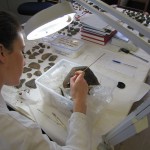
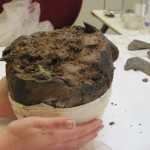
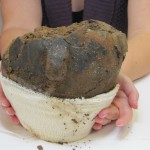
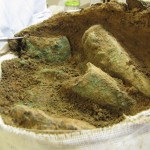
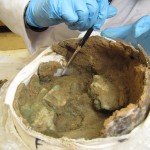
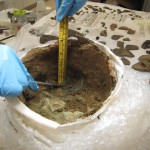
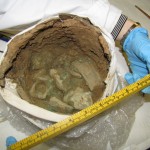
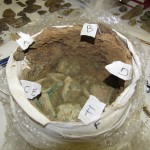
The soil was removed in layers using the x-ray as a guide, and the position of the metal work was documented. Two complete and some fragments of socketed axes were removed, as well as part of an ingot and the tip of a socketed spear. As with excavating the inside of the socketed axes, we were keeping an eye out for any potential organic inclusions in the hoard.
Further soil was removed, and an area completely compact with metal work was found – this is the area of ‘white’ from the x-ray. As the objects at this point were so tightly packed in the vessel, the surfaces of the metalwork had corroded together, making it impossible to remove any further pieces. A new approach to the conservation of the pot and the removal of its contents is now being considered.